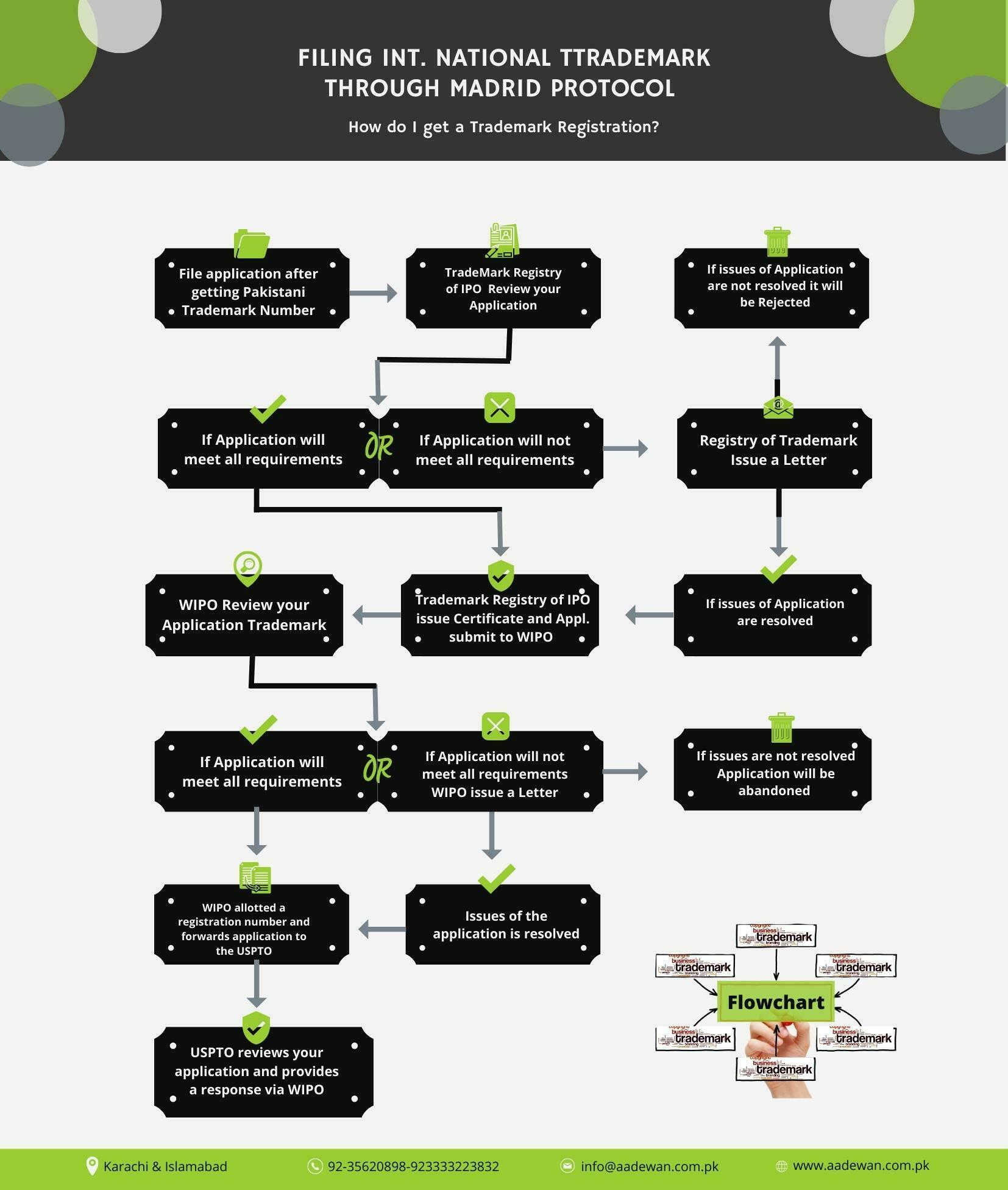To file for a Global Trademark Register under the Madrid Protocol, applicants must fulfill specific requirements based on their home country. For applicants in Pakistan, one of the following conditions must be met:
- Be a citizen of Pakistan.
- Be a resident of Pakistan.
- Have a genuine business or commercial establishment in Pakistan.
In addition, the applicant must hold a national trademark registration number with the Trademark Registry of Pakistan, which will serve as the foundation for the international filing. The Global Trademark Register must align with the national registration in terms of the trademark and the list of goods/services.
Through the Madrid Protocol, applicants can designate multiple member countries for trademark protection. The application can be filed either via a prescribed form or electronically.
We simplify the Madrid Protocol Global Trademark Register process for you. Once you file with the Trademark Registry (Office of Origin) in Pakistan, the registry will verify your details and forward your application to the World Intellectual Property Organization (WIPO).
You can choose to file the application in one of three languages: English, French, or Spanish. This flexibility allows you to designate multiple countries for global trademark protection, ensuring that your brand is safeguarded in the jurisdictions that matter most.
We rely on the WIPO Global Brand Database to conduct thorough trademark searches, helping you identify trademarks registered under the Madrid system, Lisbon system, and those protected under the Paris Convention 6ter. This helps us assess whether your trademark may conflict with others already registered internationally.
File with the Office of Origin:
Submit your trademark application to the Trademark Registry of Pakistan. This serves as the foundation for your international filing.
WIPO’s Formal Review:
After your application is submitted, WIPO conducts a formal review to ensure compliance with the Madrid Protocol. If all requirements are met, WIPO will register the trademark in the International Register and notify the designated countries.
Substantive Review by Designated Countries:
Each designated country will then perform its own substantive examination of your trademark based on national laws. The scope of protection for your trademark is typically determined within 12 to 18 months.
For applicants from Pakistan, international trademark applications are submitted to the Trademark Registry (TMR) of the Intellectual Property Organization of Pakistan (IPO-Pakistan). Furthermore the TMR ensures the application complies with the Madrid Protocol. If no objections arise, the TMR certifies and forwards the application to WIPO for international registration, helping to expand your brand’s protection globally.
Furthermore our Global Trademark Register services simplify the complex International Trademark Filing Process under the Madrid Protocol, making it easier for businesses in Pakistan to protect their trademarks worldwide. From filing with the Trademark Registry of Pakistan to international registration with WIPO, we guide you every step of the way, ensuring your trademark is securely protected in multiple countries.
Our team consists of experienced trademark professionals who understand the complexities of global trademark law and the nuances of different jurisdictions.
We provide trademark search services in over 100 countries, ensuring you have protection in all major markets.
By leveraging tools like the Madrid Protocol, we offer a cost-efficient way to extend your trademark protection worldwide.
Our thorough searches and expert analysis give you the confidence to expand your brand without the fear of infringing on others’ intellectual property.
Contact us today to begin your journey toward global brand protection with the Madrid Protocol!






